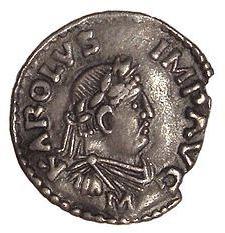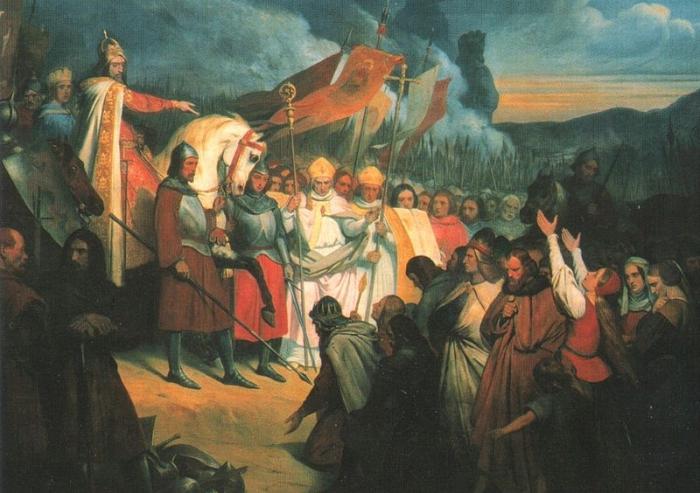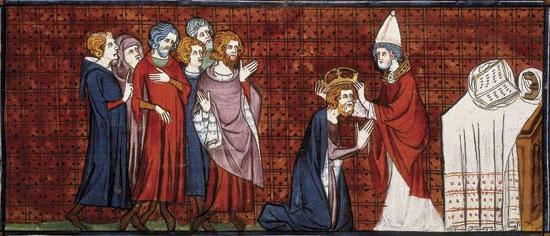The Roman Empire, falling under the onslaught of the barbarians, left behind itself large nostalgic aspirations. The splendor and grandeur of Ancient Rome were such that even the conquerors tried to copy them. In Europe, latent processes took place, wishing to revive a powerful single state, which would stretch, like Rome before, from the Atlantic Ocean over all the lands of Western Europe. Only the empire of Charlemagne was able to fulfill the dream of collecting land into a single state. Briefly consider its history, prosperity and decline.

After the fall of Rome and imperial power, one of the leaders of the Germanic tribe of Franks, Clovis, proclaimed himself king at the end of the fifth century. From him began a dynasty called the Merovingians. In the VIII century. Pepin Korotky, the mayor of the last Merovingian king, removed his overlord in 751. The throne was seized by Pipin’s son, Karl, who was later called the Great. Being a born warrior and a talented commander, the new lord not only gave the name of an entire royal dynasty, but also managed to expand the borders of the Frankish state to an unprecedented scale. As a result of his military campaigns, a real superstate was formed - the empire of Charlemagne.
He inherited the reins early and was king for 46 years (from 768 to 814). During this time he took part in fifty military campaigns. As a result, thanks to his genius commander, Karl doubled the size of the kingdom. He annexed Bavaria and Italy. In the east, he conquered the Saxons and brutally crushed their revolts every time, and also successfully defeated the Avar Turks who threatened him. In the west, the empire of Charlemagne faced a more powerful adversary - the Saracens, who also led their conquest, capturing the Iberian Peninsula almost entirely. The troops of the ruler managed to push them across the Ebro River.

During its heyday, around 800, the empire of Charlemagne extended from the Ebro in the west to the Danube and the Elbe in the east, in the north it went to the North Sea and the Baltic, and in the south - to the Mediterranean Sea. Having strategically correctly granted the Pope secular power over the “papal province”, the founder of the dynasty managed to get the support of the clergy, and at the same time, the pope was considered his vassal. In 800, at Christmas, Leo III, the Pope of Rome, entrusted the imperial crown to the great ruler and proclaimed it to the whole Christian world as "God crowned by the Roman emperor."
The empire of Charlemagne maintained diplomatic relations with both Byzantium and the Arab world. In an effort to revive the power of the Roman Empire and the splendor of antiquity, the ruler founded in his capital, Aachen, a kind of cultural center. There, at the invitation of the king, John Scott Eriugen, Alcuin, Paul Deacon, Hraban Moor and others came and worked. By imperial decree, schools were founded in various parts of the country, in which not only monks studied, but also secular people. This short flowering of culture has received the name of the Caroling Renaissance from historians.

However, the sons of Karl - Louis, Lothar and Karl Lysy - were unable to agree on the inheritance and began to lead feuds with each other. In 843, the Treaty of Verdun was signed, according to which the territory was divided between the brothers. Despite the fact that the royal dynasty still existed, the Carolingian empire fell apart. The title of emperor is becoming increasingly ephemeral. In the XI century. in the kingdom of France begins a new, Capetian dynasty (founder of Hugo Capet).